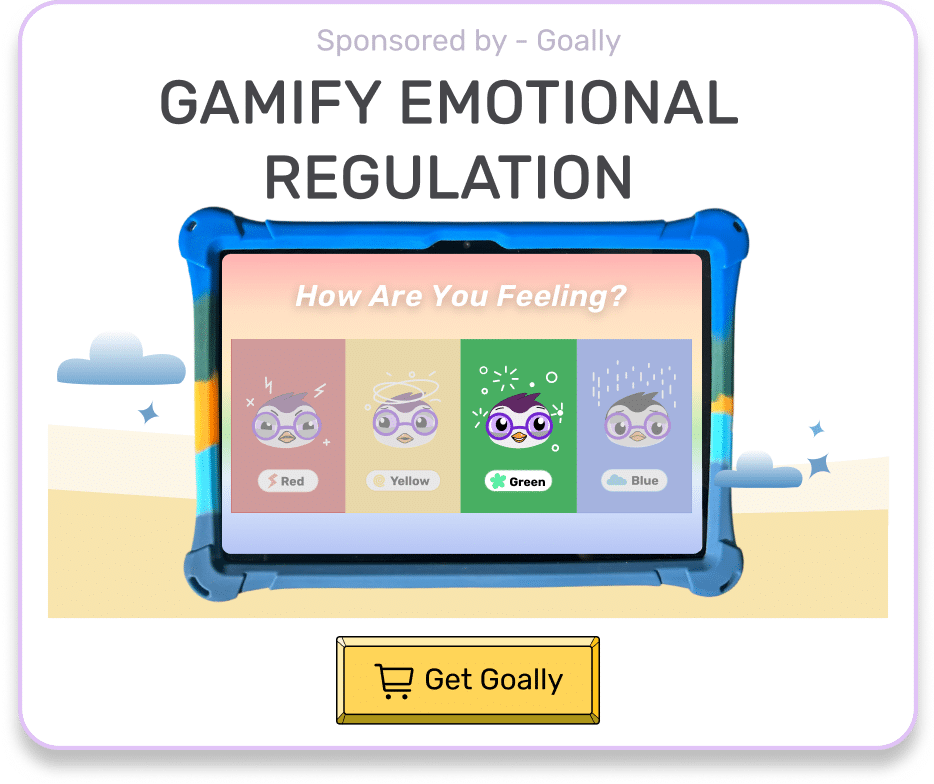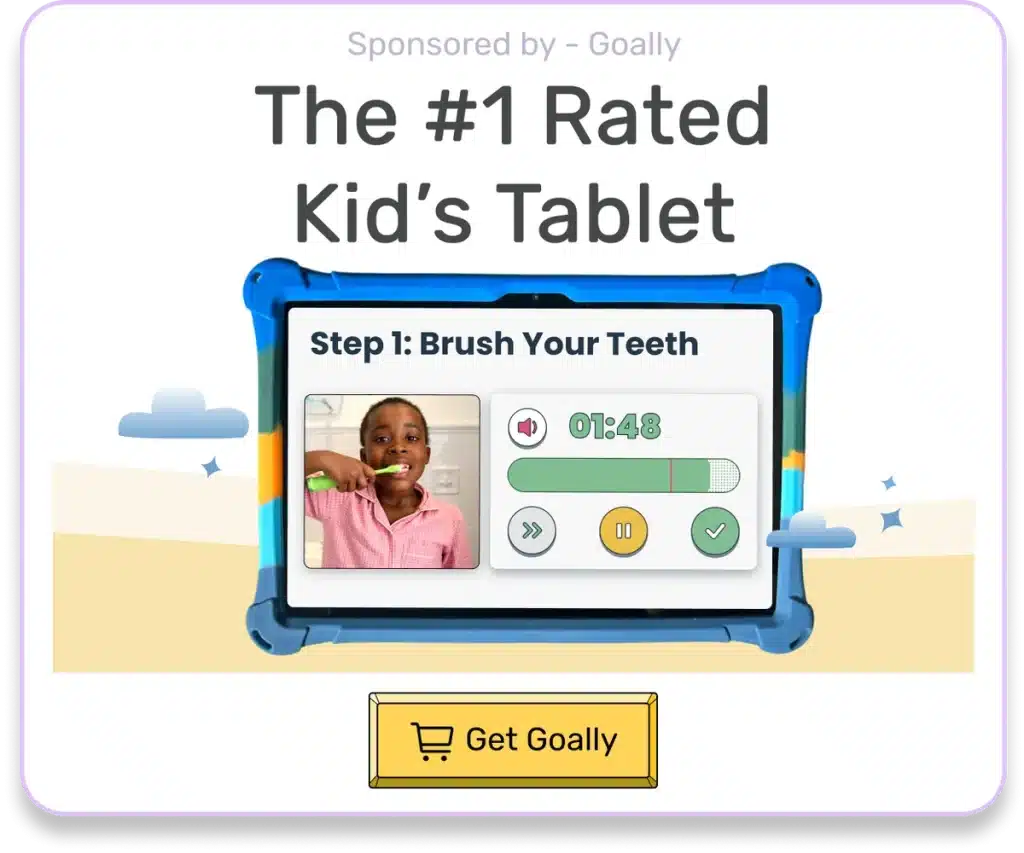As a parent, you want to understand your child’s needs. When it comes to ADHD, you might wonder, “Is ADHD a mood disorder?” The estimated number of children aged 3–17 years ever diagnosed with ADHD, according to a national survey of parents, is 6 million (9.8%). In this blog post, we’ll explain the differences between ADHD and mood disorders. This will help you support your neurodivergent child better, and Goally is here to help you on this journey.
Table of Contents
What are ADHD and Mood Disorders?
First, let’s talk about what ADHD and mood disorders are.
ADHD, or Attention Deficit Hyperactivity Disorder, often leaves kids struggling to focus, stay still, and manage their behavior. It’s not so much about mood as it is about attention and activity levels.
On the other hand, mood disorders impact how a person feels. Their name says it all—they’re all about mood.
| Disorder | Primary Effects |
|---|---|
| ADHD | Difficulty paying attention, sitting still, and controlling actions |
| Mood Disorders (e.g., depression, bipolar disorder) | Affects a person’s feelings and mood |
Both can undeniably make things challenging for our kids, but they’re not identical. In straightforward terms, no, ADHD is not a mood disorder. Yet, it’s not uncommon for a child to have both ADHD and a mood disorder, which can blur the lines between the two.
It’s essential to comprehend these differences as it aids us in providing the right support. That’s where Goally’s learning tablet for kids steps in as a valuable asset, simplifying this process for both you and your child.
How are ADHD and Mood Disorders Different?
Now that we know ADHD is not a mood disorder let’s look at the main differences between the two:
- How Long Symptoms Last: ADHD symptoms happen all day long. Mood disorder symptoms can change in how strong they are and how long they last.
- Emotions: Kids with ADHD might have trouble controlling their emotions. But this is because of problems with attention and impulsivity, not mood disorders.
- When Symptoms Start: ADHD symptoms usually show up before a child is 12 years old. Mood disorders often start when kids are teenagers or adults.
- What They Affect: ADHD affects attention, impulsivity, and hyperactivity. Mood disorders affect a person’s emotions.
By understanding these differences, you can better support your child’s unique needs and help them thrive. Goally’s apps for kids with thinking and learning differences can also be a helpful resource in managing ADHD symptoms.

When ADHD and Mood Disorders Happen Together
Even though ADHD is not a mood disorder, sometimes kids can have both at the same time. Research shows that kids with ADHD are likely going to have mood disorders like depression and anxiety. This can make it even harder for parents to help their kids.

Here are some tips for parents who are dealing with both ADHD and mood disorders:
- Get Professional Help: A mental health expert can help figure out if your child has ADHD, a mood disorder, or both. They can also help with treatment.
- Learn More: Find out about the symptoms, treatments, and ways to cope with both ADHD and mood disorders. This will help you support your child better.
- Talk with Your Child: Make sure your child feels safe talking about their feelings and problems with you.
- Make Routines: Having routines can help kids with ADHD and mood disorders feel more secure and manage their symptoms better.
- Work with Teachers: Talk to your child’s teachers and school staff to make sure your child gets the help they need at school.
Working together with professionals and educators, and using tools like Goally can make a significant difference in your child’s life.
Read More: ADHD Behavioral Problems

Helping Your Child with ADHD or Mood Disorders
Whether your child has ADHD, a mood disorder, or both, there are things you can do to help them:
- Give Praise and Rewards: Telling your child when they do something good and giving rewards can help them feel better about themselves and behave better.
- Be Organized: Having a neat and organized home with clear rules can help your child feel more in control and focused.
- Encourage Exercise: Exercise can help kids with ADHD and mood disorders feel better and pay attention more.
- Consider Therapy: Therapy, like cognitive-behavioral therapy (CBT) or family therapy, can help your child learn how to cope with their feelings and problems.
- Take Care of Yourself: Make sure you take care of your own feelings and needs so you can be the best parent you can be.
Using Goally’s learning tablet and apps can also provide additional support for your child, making it easier for them to manage their symptoms and succeed in their daily activities.
Understanding and Supporting Your Child’s Needs
To sum up, ADHD is not a mood disorder. But it’s important for parents to know that kids can have both ADHD and mood disorders. By learning more, getting help, and using the right strategies, you can support your neurodivergent child. Remember, you’re not alone. With the right tools and resources, like Goally, you can help your child deal with ADHD and mood disorders confidently.
Try Goally For Your Child With ADHD
Goally helps kids with ADHD stay focused and build skills. Unlike a Kindle or an iPad that kids get easily distracted on, Goally has no YouTube, no social media, no web browser, and especially no ads.
Goally uses game play as a points-based motivator for your kiddo with ADHD and helps them learn emotional regulation skills. It’s simple to set up and has an expert-informed design.

FAQs About Is ADHD a Mood Disorder
Is ADHD a mood disorder? No, ADHD is not a mood disorder. ADHD affects attention and activity levels, while mood disorders impact feelings and emotions. Can a child have both ADHD and a mood disorder? Yes, a child can have both ADHD and a mood disorder. This can make diagnosis and treatment more complex. What's the main difference between ADHD and mood disorders? ADHD primarily affects a child's attention, stillness, and self-control, whereas mood disorders mainly impact a child's feelings and moods. How can Goally's learning tablet help children with ADHD and mood disorders? Goally's learning tablet offers learning tools such as visual schedules and emotional regulation apps, which can aid in managing and understanding ADHD and mood disorders. What tools can support children with ADHD and mood disorders? Visual schedules, emotional regulation apps, and reward systems, like those provided by Goally, can be highly beneficial for children with ADHD and mood disorders.
This post was originally published on April 28th, 2023. It was updated on June 1st, 2023.

Goally
We help parents teach their kids life skills, like doing bedtime and morning independently. Backed by science, we incorporate evidence-based practices and expert-informed designs in all of our apps and content.






